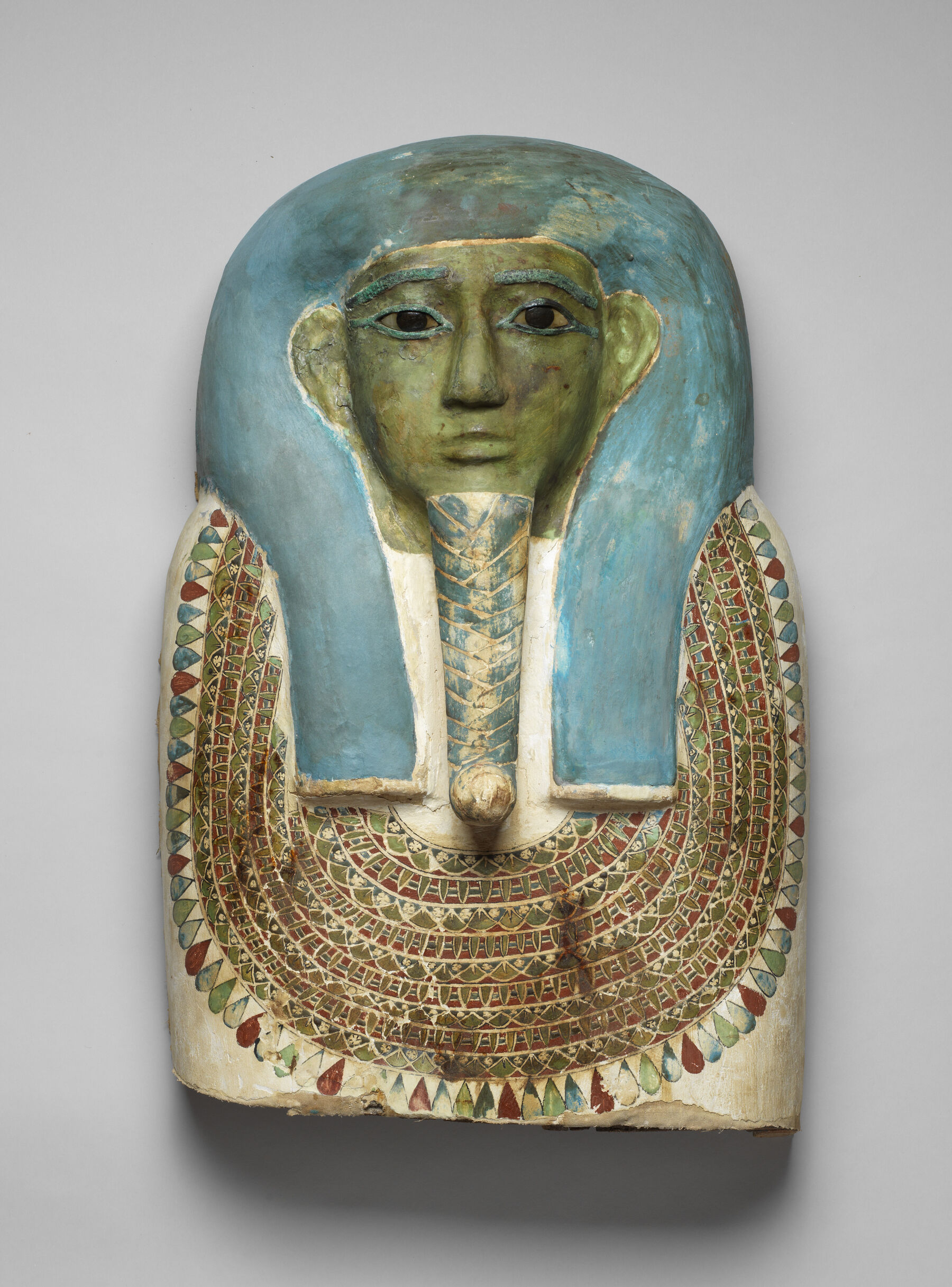Dynasty 25 coffins from cemeteries around the mouth of the Faiyum consciously copy mummy-shaped coffins from the Middle Kingdom.1 This practice is known as archaism, a deliberate attempt to copy earlier styles associated with a specific historical period.2 When the Nubians ruled Egypt in Dynasty 25, artists modeled coffins based on earlier anthropoid coffins to ally themselves with Egypt’s great past. This was not slavish copying of Middle Kingdom surface decoration with text bands and textile design. Instead, Dynasty 25 coffins embraced the anthropomorphic form but colored them white to emulate mummy shrouds.
This coffin bust once belonged to a mummiform inner coffin. The face is painted green, with black and white eyes, a blue wig, and a blue plaited beard. Around the neck is a nine-strand polychrome necklace ending in red, blue, and green drop beads. The green face, upturned beard, and white shroud associated the owner with Osiris, the deity who oversaw the fertility of crops and eternal life. The figure’s glass eyes are arresting, accentuated by bronze cosmetic lines and eyebrows. In its original state, the gleaming bronze would have imbued the face with vitality and life. For the coffin’s treatment, see the essay by Renee Stein, Brittany Dinneen, and Katlyn Wright in this volume.
MH
Bibliography
- Josephson 2001
- Josephson, Jack. A. 2001. “Archaism.” In OEAE, vol. 1, edited by D.B. Redford, 109–113. Oxford and New York: Oxford University Press.
